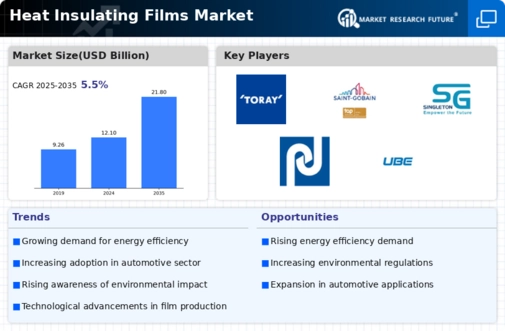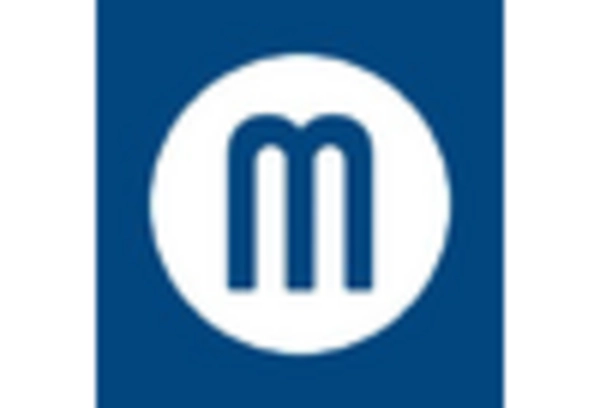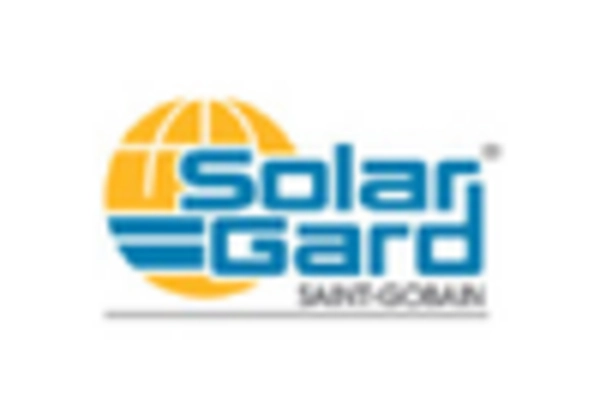Market Analysis
In-depth Analysis of Heat Insulating Films Market Industry Landscape
The Heat Insulating Films market operates within a dynamic framework shaped by various factors that significantly impact its growth and trajectory. At the core of these market dynamics is the intricate interplay between supply and demand. Heat insulating films, crucial in enhancing energy efficiency and reducing heat transfer in buildings, automobiles, and electronic devices, witness fluctuations in demand influenced by advancements in energy-efficient technologies, building regulations, and consumer awareness. Understanding these shifts in supply and demand is crucial for industry participants to make informed decisions and adapt strategies to meet the evolving needs of diverse sectors.
Technological advancements play a pivotal role in shaping the Heat Insulating Films market dynamics. Continuous research and innovations in material science, nanotechnology, and manufacturing processes contribute to the development of more efficient, durable, and visually appealing heat insulating films. These technological breakthroughs not only enhance the thermal performance of insulating films but also influence market competitiveness, as manufacturers strive to offer solutions that align with the demand for sustainability, comfort, and energy savings.
The dynamics of the Heat Insulating Films market are closely tied to end-user industry trends. For instance, the construction industry's increasing focus on sustainable building practices and energy-efficient designs drives the demand for high-performance heat insulating films in windows and facades. Similarly, in the automotive sector, the need for enhanced thermal management and fuel efficiency contributes to the adoption of insulating films in windows and interiors. Understanding and adapting to these industry-specific trends are essential for market participants to align their offerings with the evolving demands of diverse end-user sectors.
Global economic factors significantly impact the Heat Insulating Films market dynamics. Economic downturns can lead to reduced construction activity and consumer spending on energy-efficient upgrades, affecting the demand for heat insulating films. Conversely, periods of economic growth and increased emphasis on environmental sustainability contribute to higher consumption rates, especially in regions where stringent building codes and energy efficiency standards drive the adoption of insulating film technologies.
Environmental considerations and regulations are key drivers shaping the Heat Insulating Films market dynamics. With an increasing emphasis on sustainability and reduced energy consumption, regulations governing building codes and the development of eco-friendly alternatives influence product formulations and market preferences. Adherence to these regulations and a commitment to environmentally responsible practices are becoming essential for success in the heat insulating films industry.
Competitive dynamics form a significant aspect of the Heat Insulating Films market. Intense competition among key players prompts strategies such as product differentiation, pricing adjustments, and innovations in design and functionality. Companies investing in research and development to create advanced heat insulating film technologies gain a competitive edge, influencing market trends and customer choices.
Regional market variances add another layer of complexity to the Heat Insulating Films market dynamics. Different regions have distinct climate conditions, building practices, and regulatory frameworks, impacting the adoption of heat insulating films. Understanding these regional nuances is crucial for market participants to tailor their offerings and marketing strategies to meet the specific needs of different markets.
Price volatility is an inherent feature of the Heat Insulating Films market dynamics. Fluctuations in raw material costs, energy prices, and global market conditions impact the pricing of insulating films. Navigating these price variations requires industry participants to adopt robust supply chain strategies and cost management practices.

















Leave a Comment